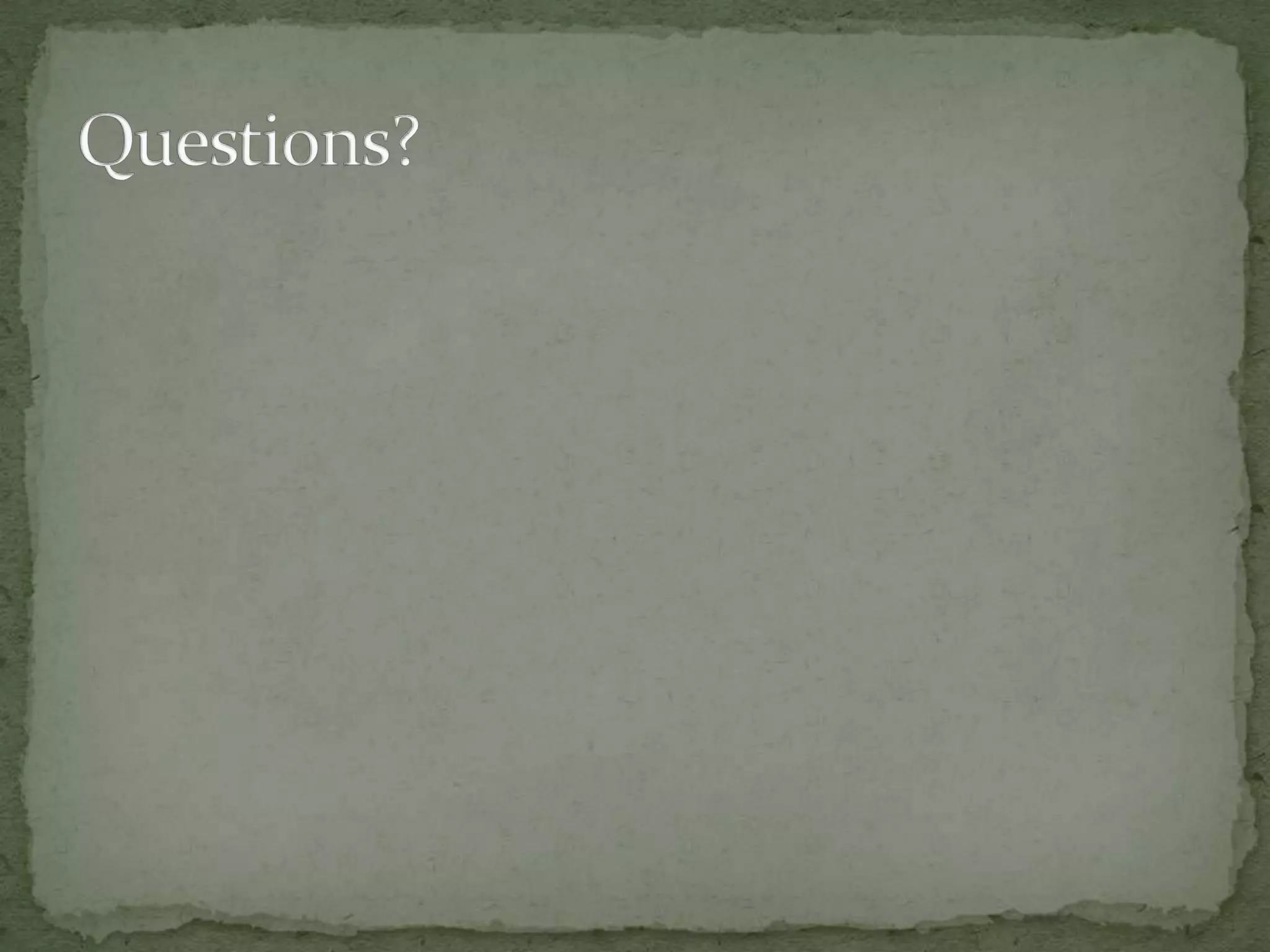- jQuery uses CSS-style selectors to select elements and create wrapped sets that allow accessing and manipulating elements - Objects in JavaScript can contain functions and properties, and functions are also objects that can be passed around and assigned to properties - Event handling in jQuery provides a cross-browser way to attach multiple handlers to events and prevent default behavior - jQuery methods like bind(), live(), delegate() allow attaching handlers to current and future elements, and events can be hijacked to make AJAX requests instead of full page posts
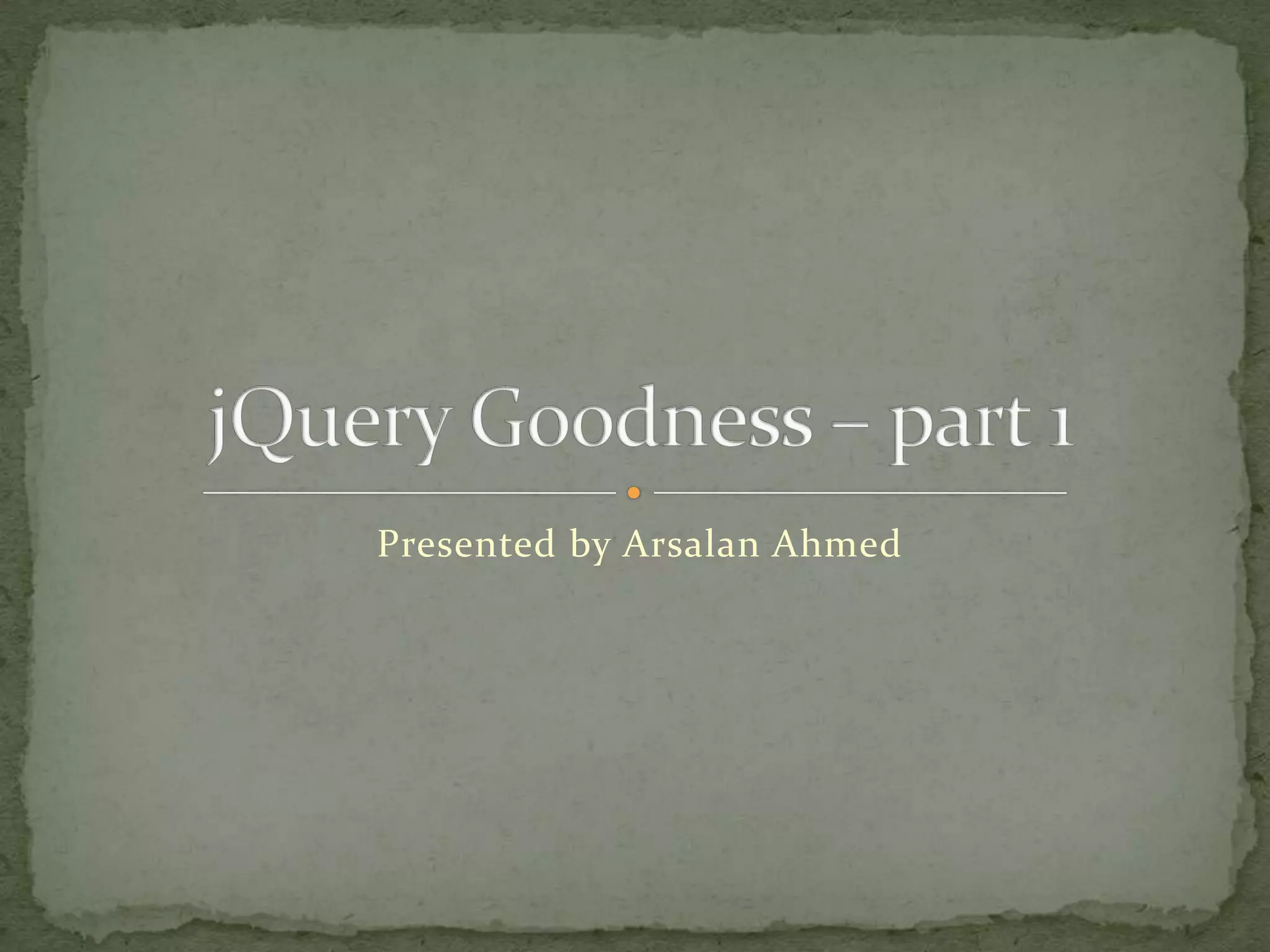
![Different species than POCOsProperties added dynamically upon first useA typo creates a new property – yikes!Properties accessed via: Dot notation (Object.Property)Subscript notation (Object[‘Property’])Literal syntax:varsomeObj = { someProp: ‘some value’, otherProp: 2 };Variables are properties. Equivalent statements in the global scope:var prop = ‘x’; window.prop = ‘x’; prop = x;Objects in Javascript](https://image.slidesharecdn.com/javascriptandjquery-12815608159556-phpapp01/75/Javascript-And-J-Query-2-2048.jpg)
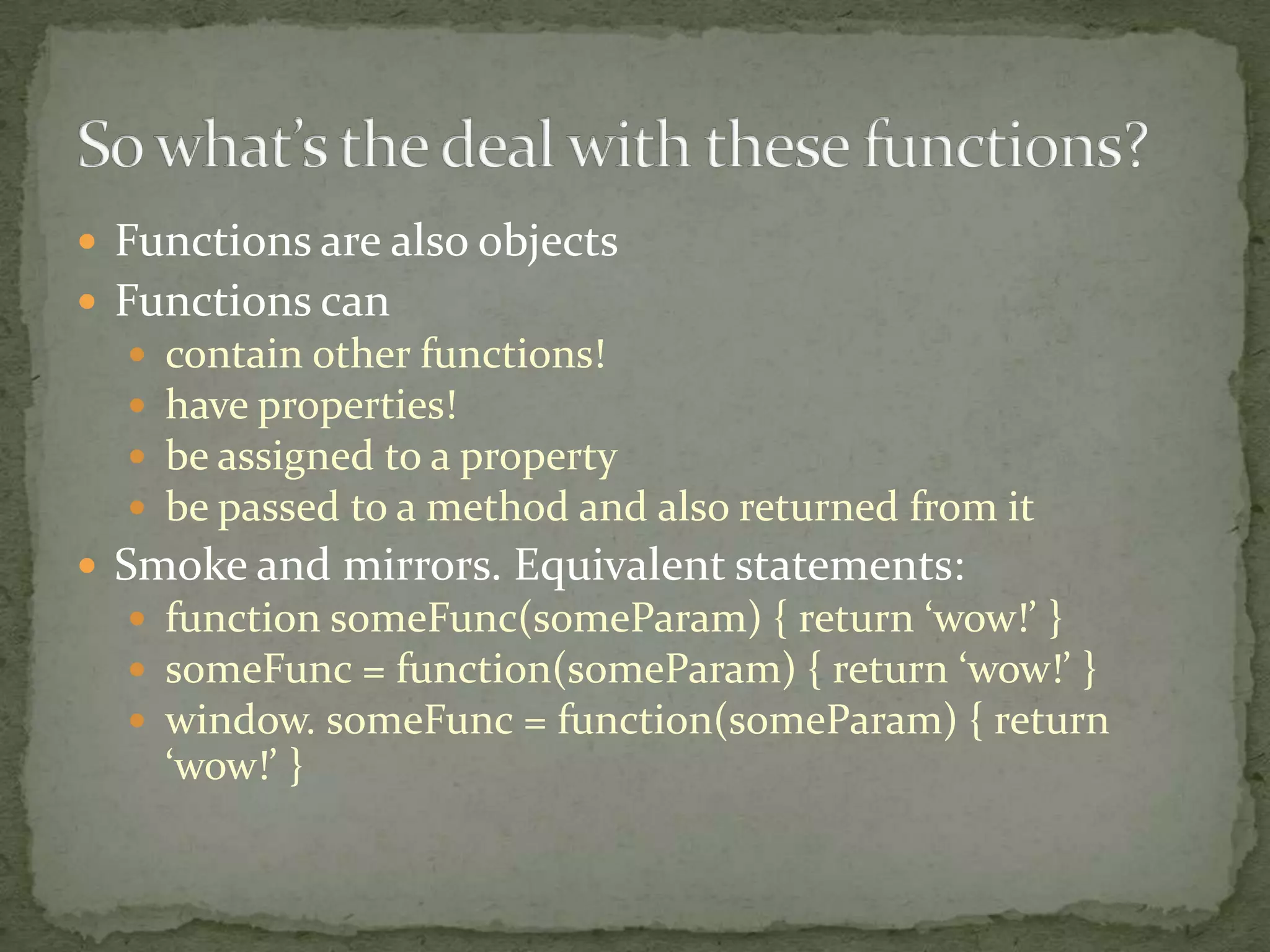
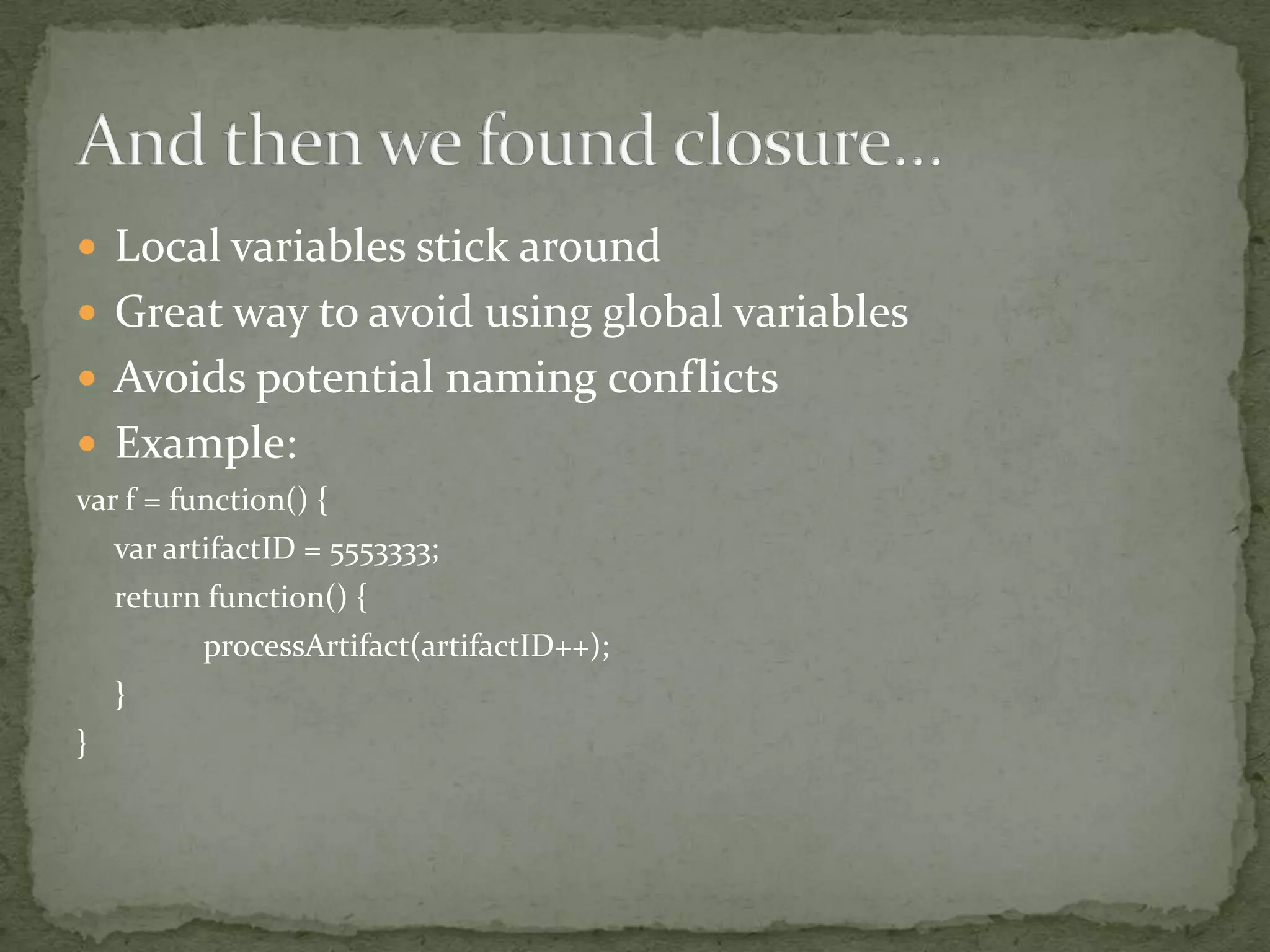

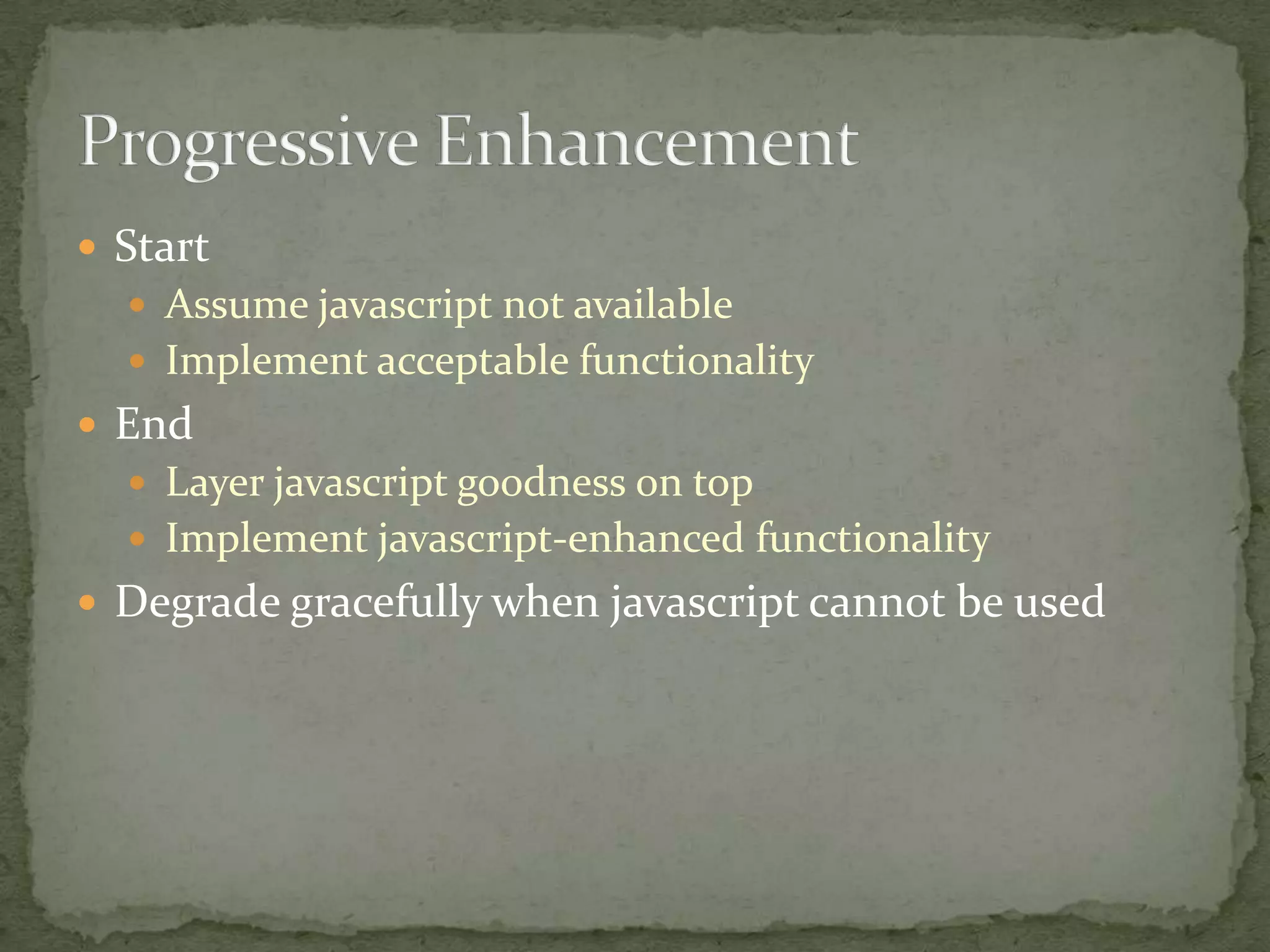
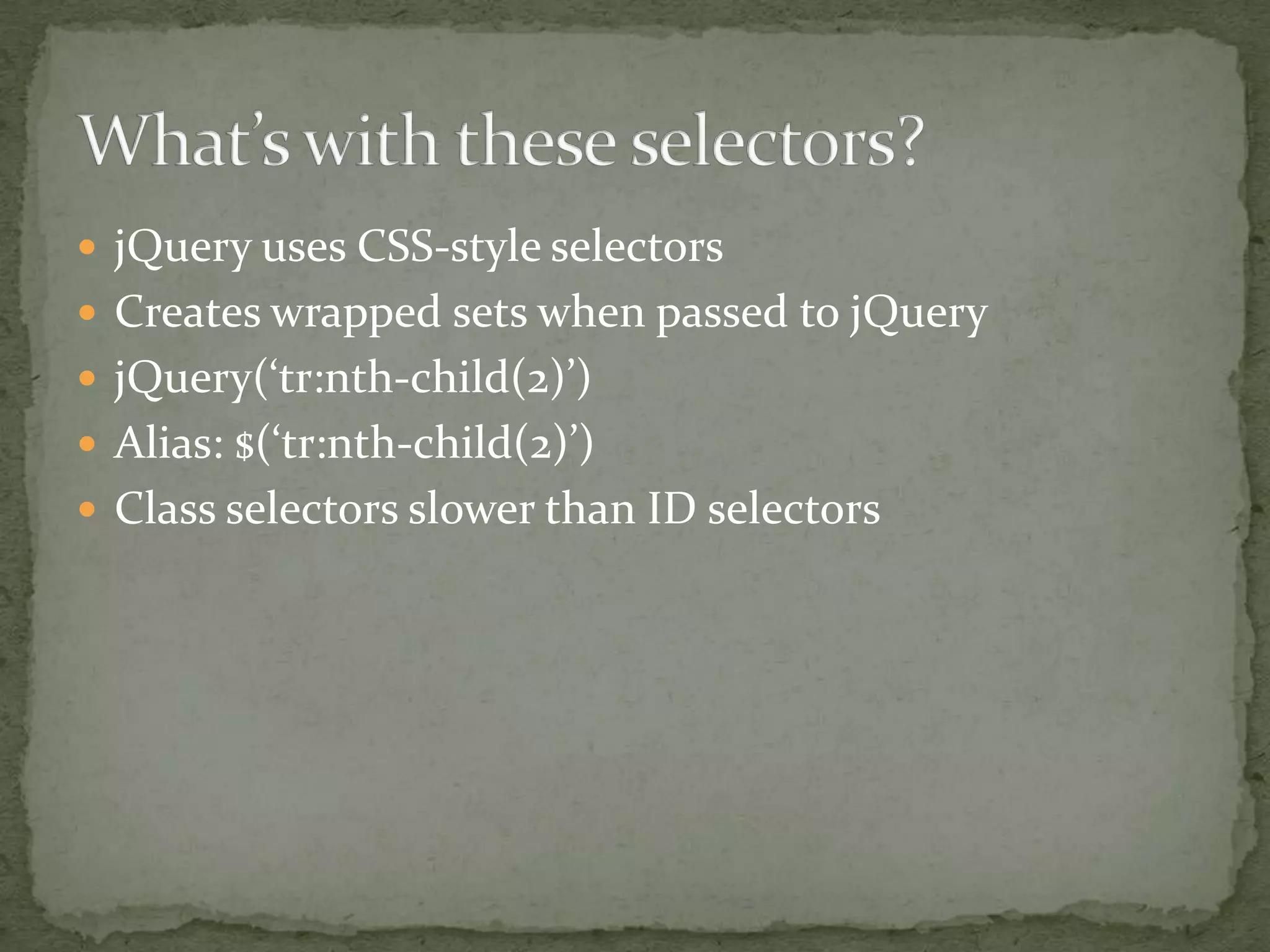
![p > a [all anchor tags, direct children of p tags]div.items a [all anchor tags, descendents of div tags with class of items]div.items:has(a) [all div tags with a class of items that contain anchor tags]a[href^=‘http://’] [all anchor tags, href attribute starts with http://]div#coolness.gunit [all div tags with the id of coolness and class of gunit]Selectors: Child, Container, Attribute](https://image.slidesharecdn.com/javascriptandjquery-12815608159556-phpapp01/75/Javascript-And-J-Query-8-2048.jpg)
![table#itemListtr:even[all even rows in the table with an ID of itemList]:checkbox:checked:enabled[all enabled and checked checkboxes]:enabled:visible[all enabled and visible elements]Selectors: Filters](https://image.slidesharecdn.com/javascriptandjquery-12815608159556-phpapp01/75/Javascript-And-J-Query-9-2048.jpg)

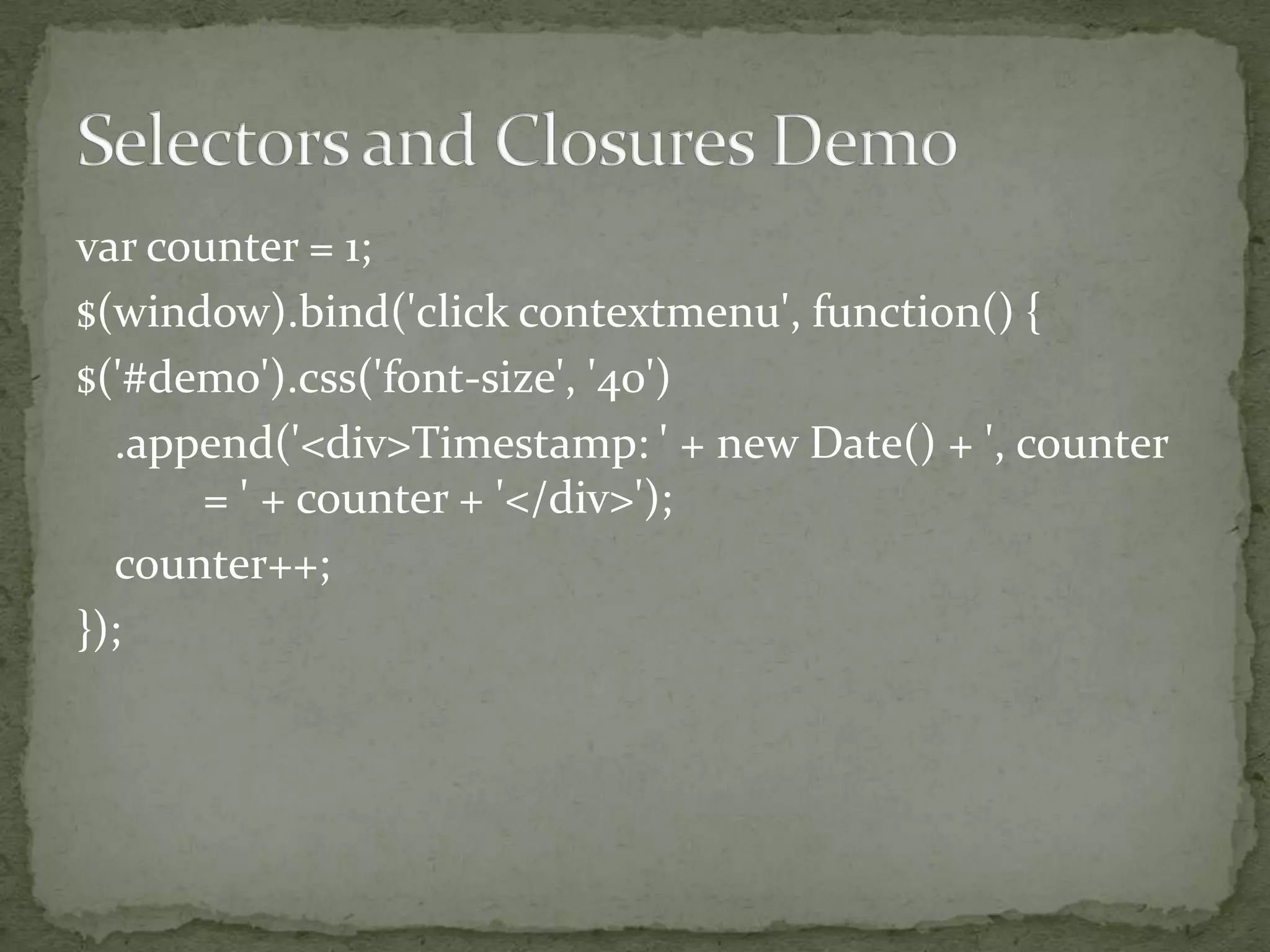
![Within functions, ‘this’ => function context of the invocationx.desc = ‘x’; y.desc = ‘y’;x.show = function() { alert(this.desc); }x.show(); [outputs ‘x’]x.show.call(y); [outputs ‘y’]](https://image.slidesharecdn.com/javascriptandjquery-12815608159556-phpapp01/75/Javascript-And-J-Query-12-2048.jpg)
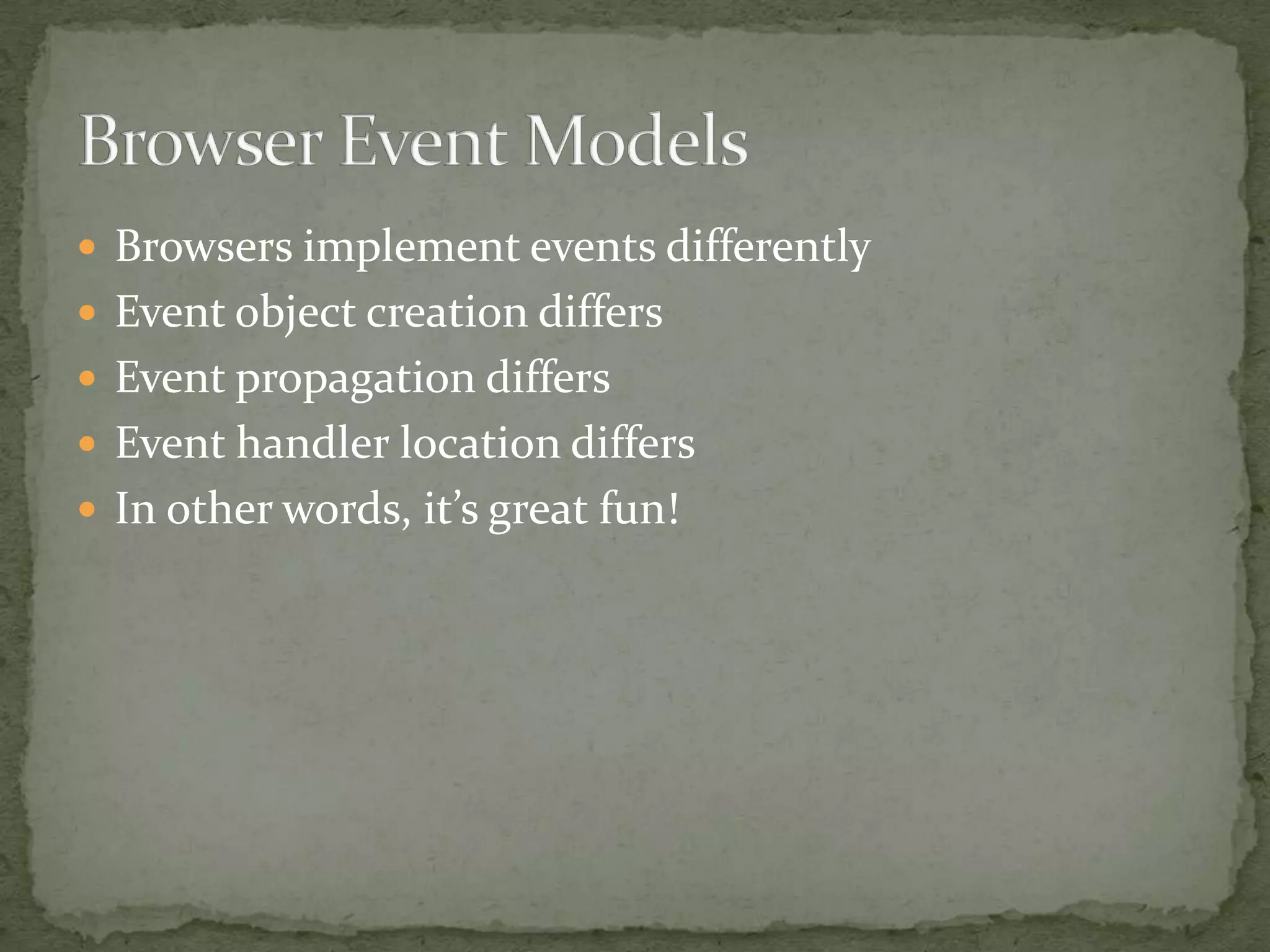
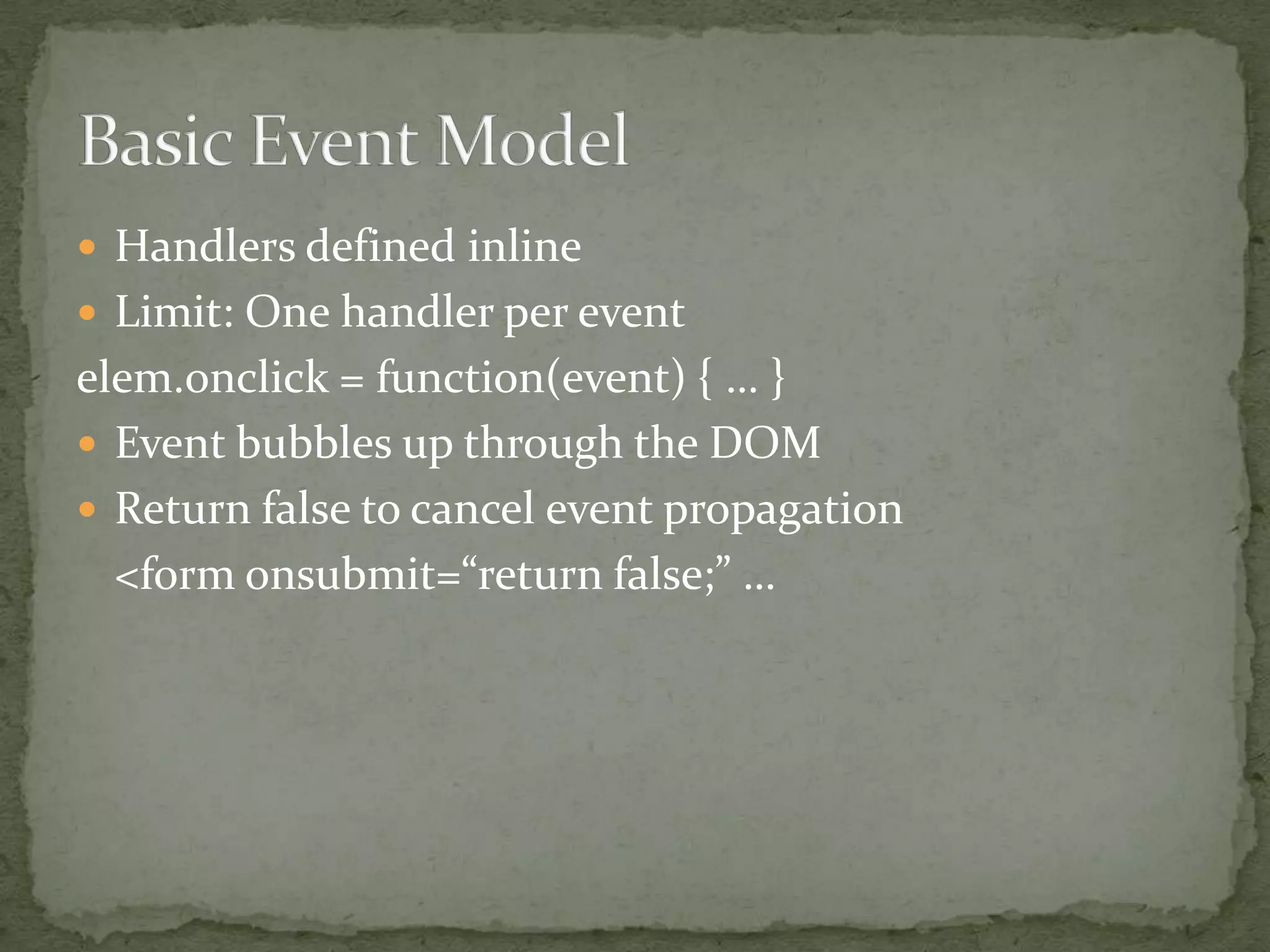

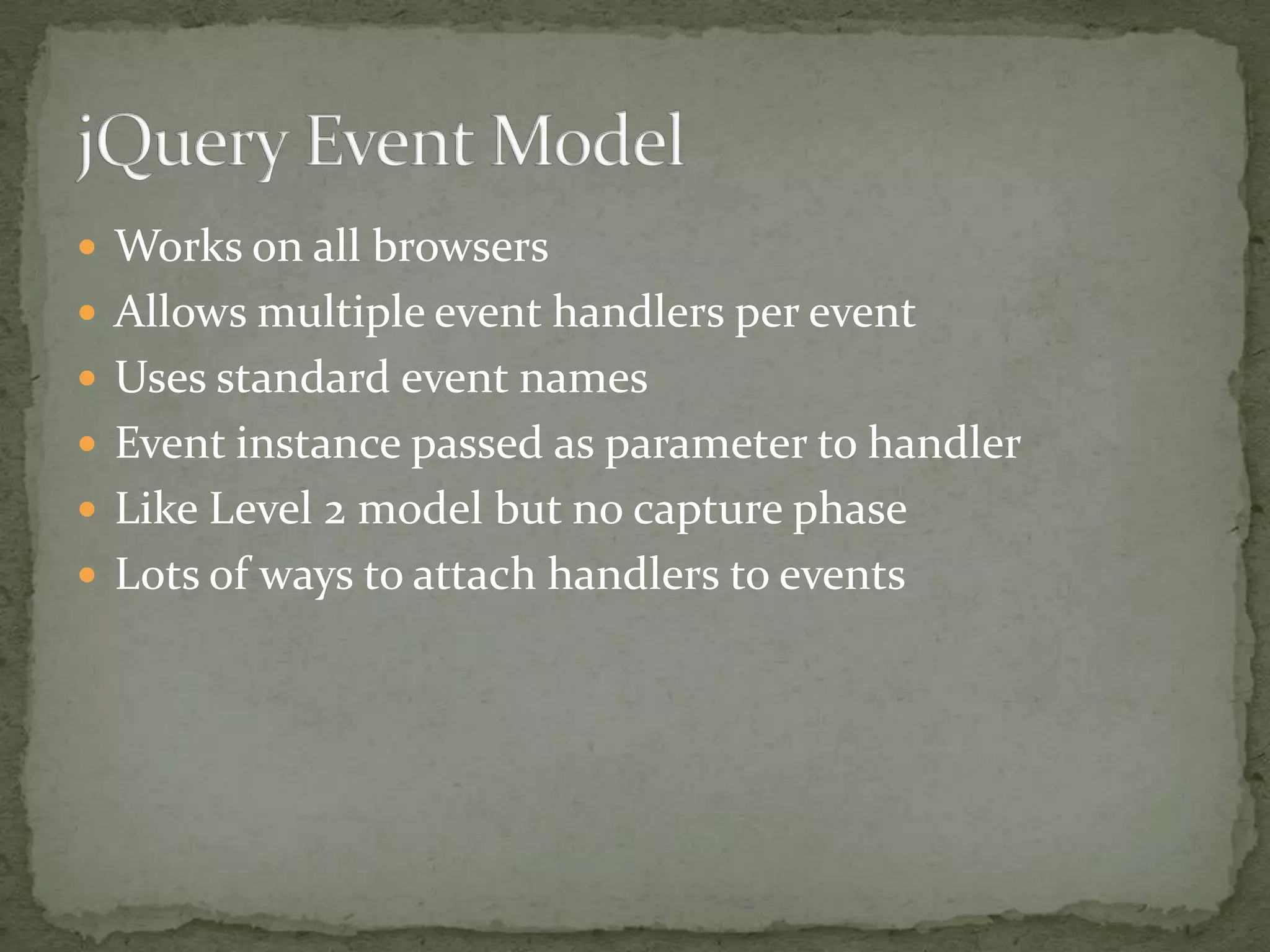
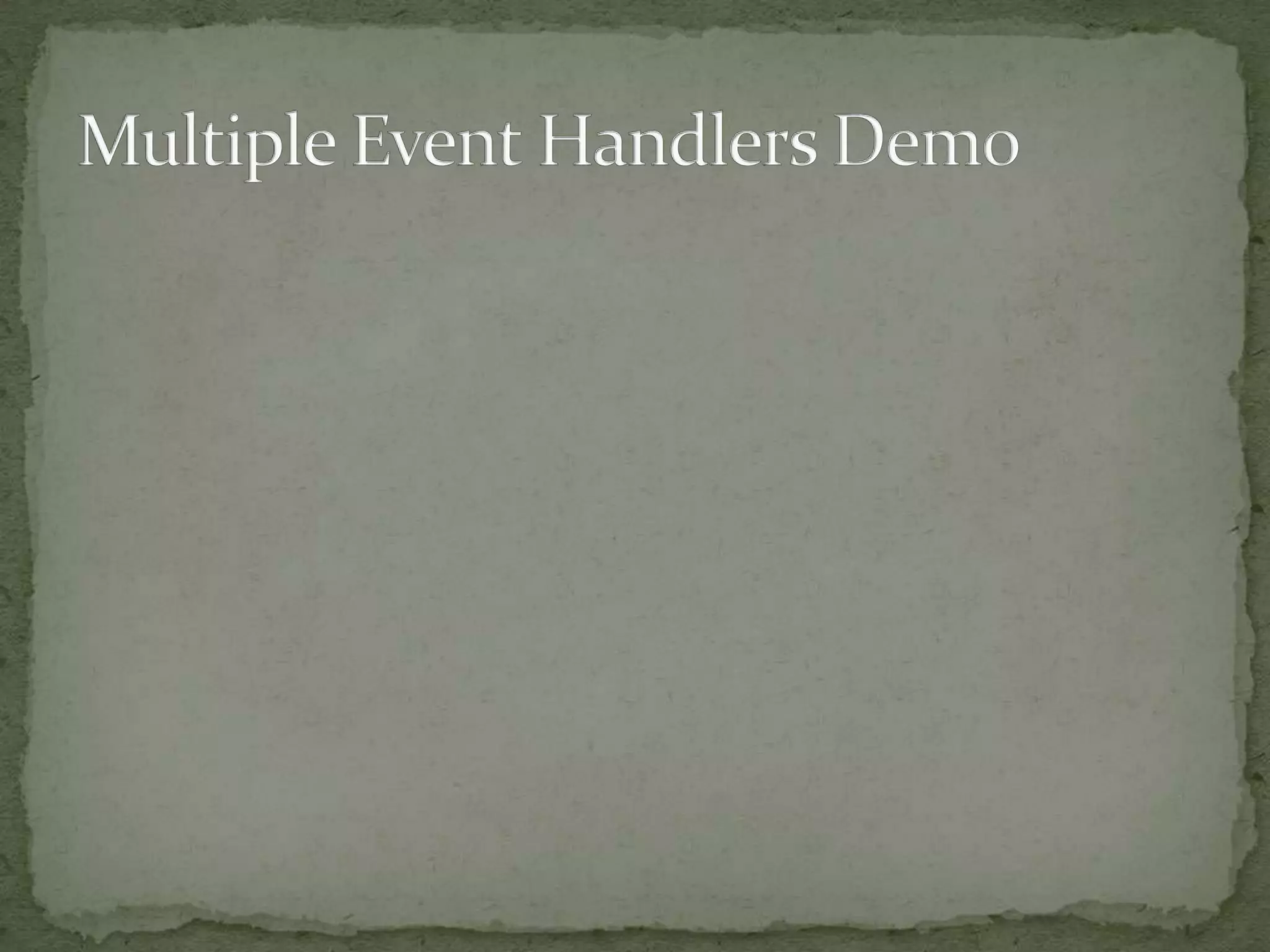
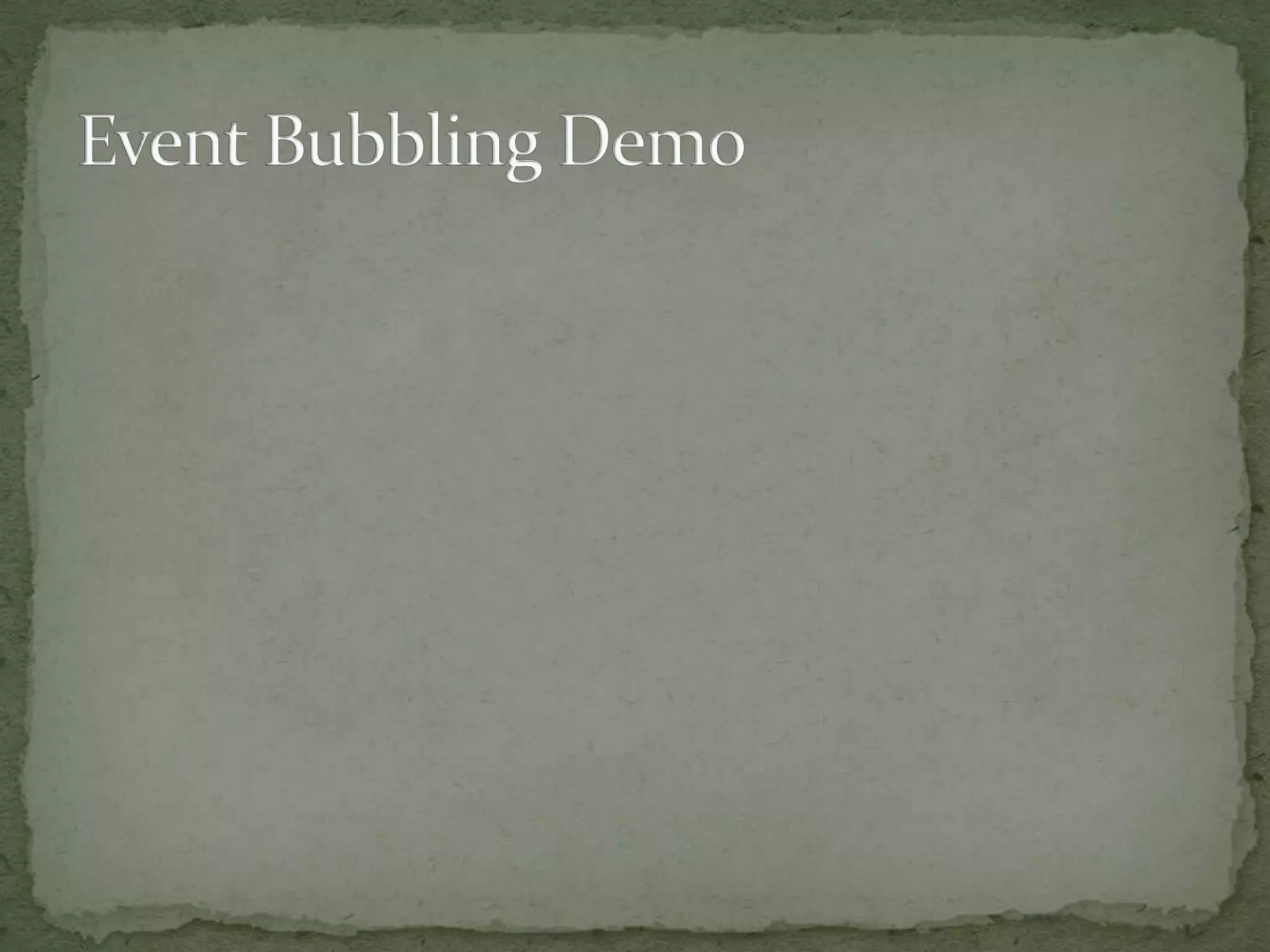


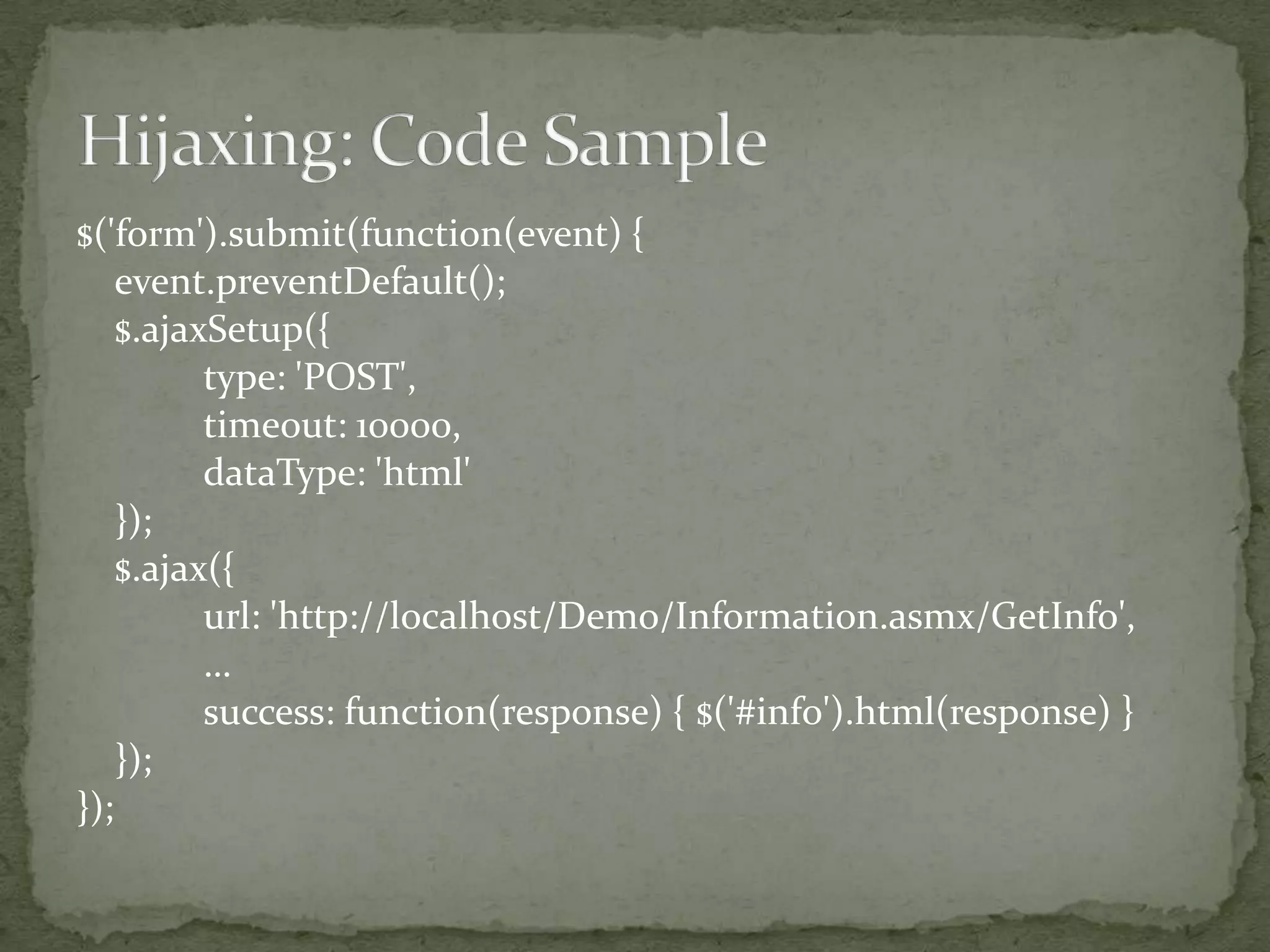

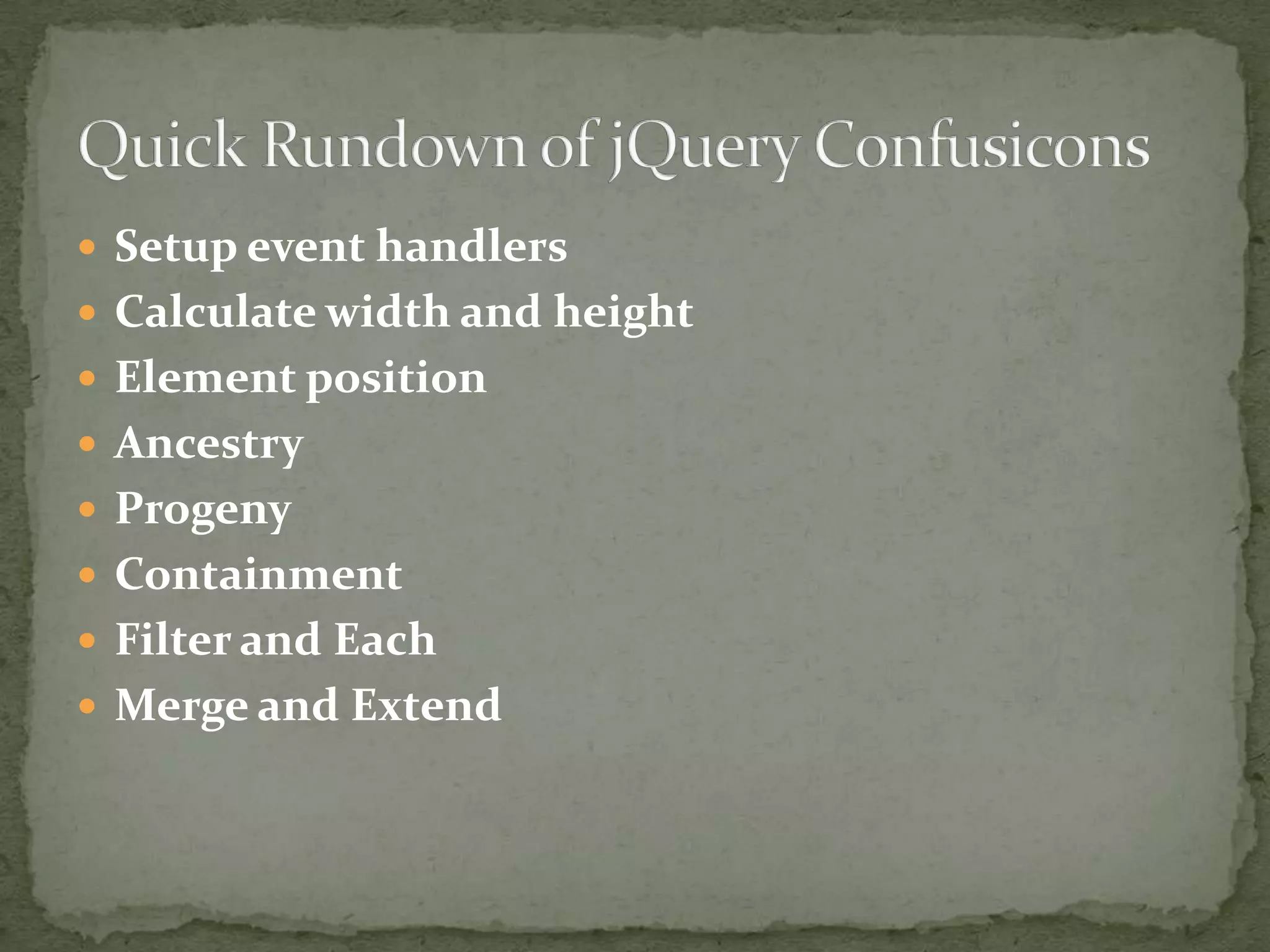


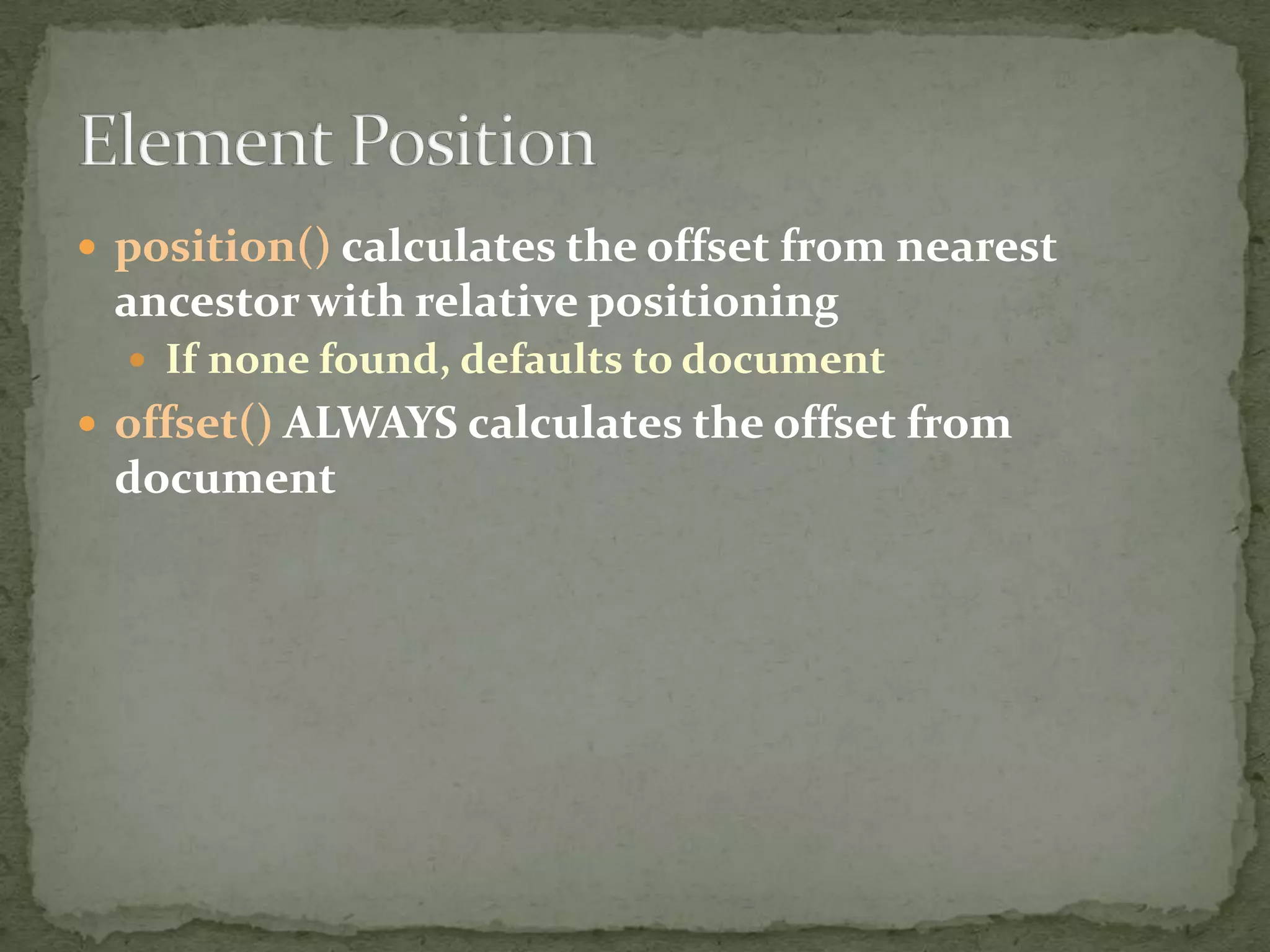
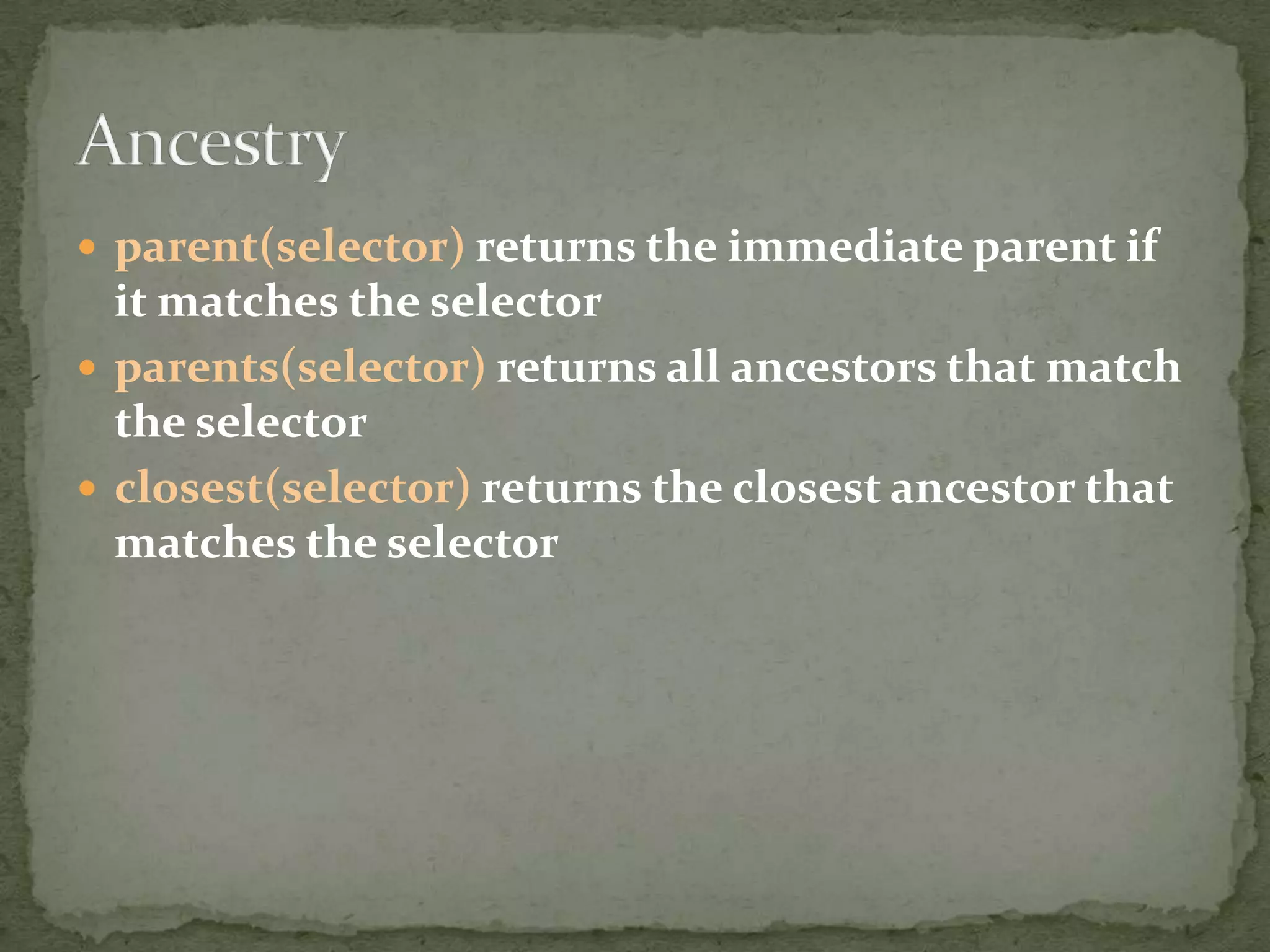
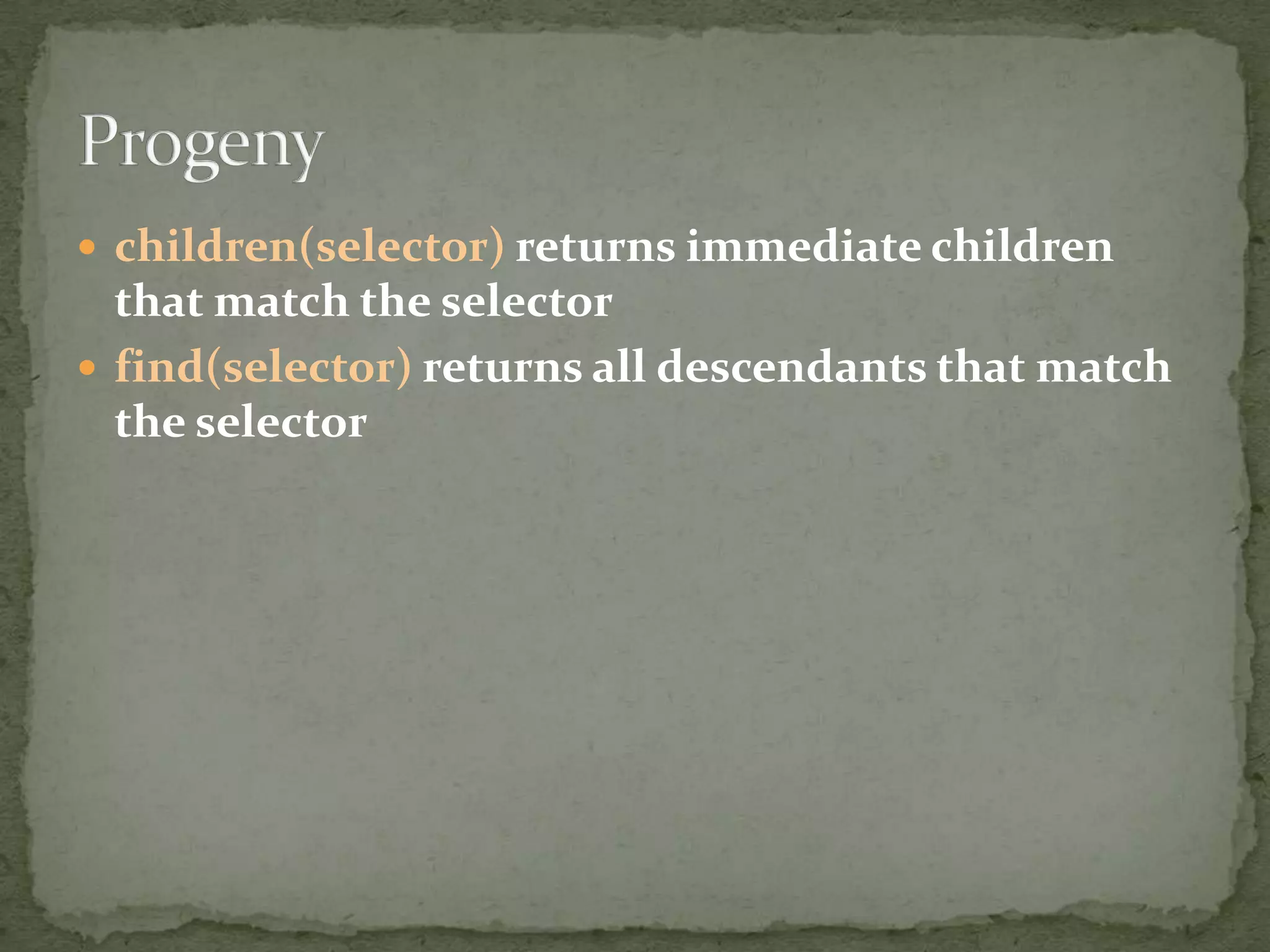
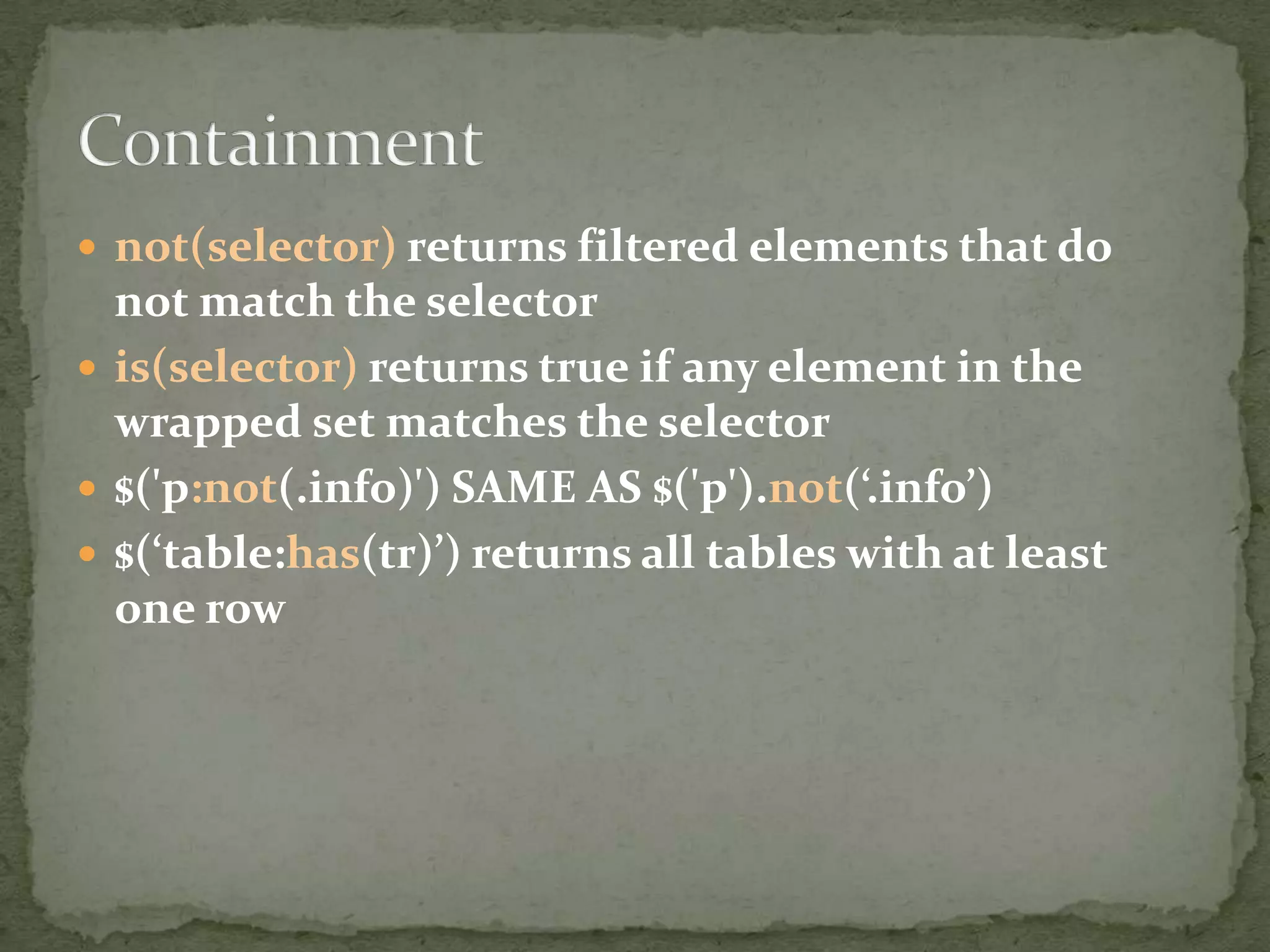
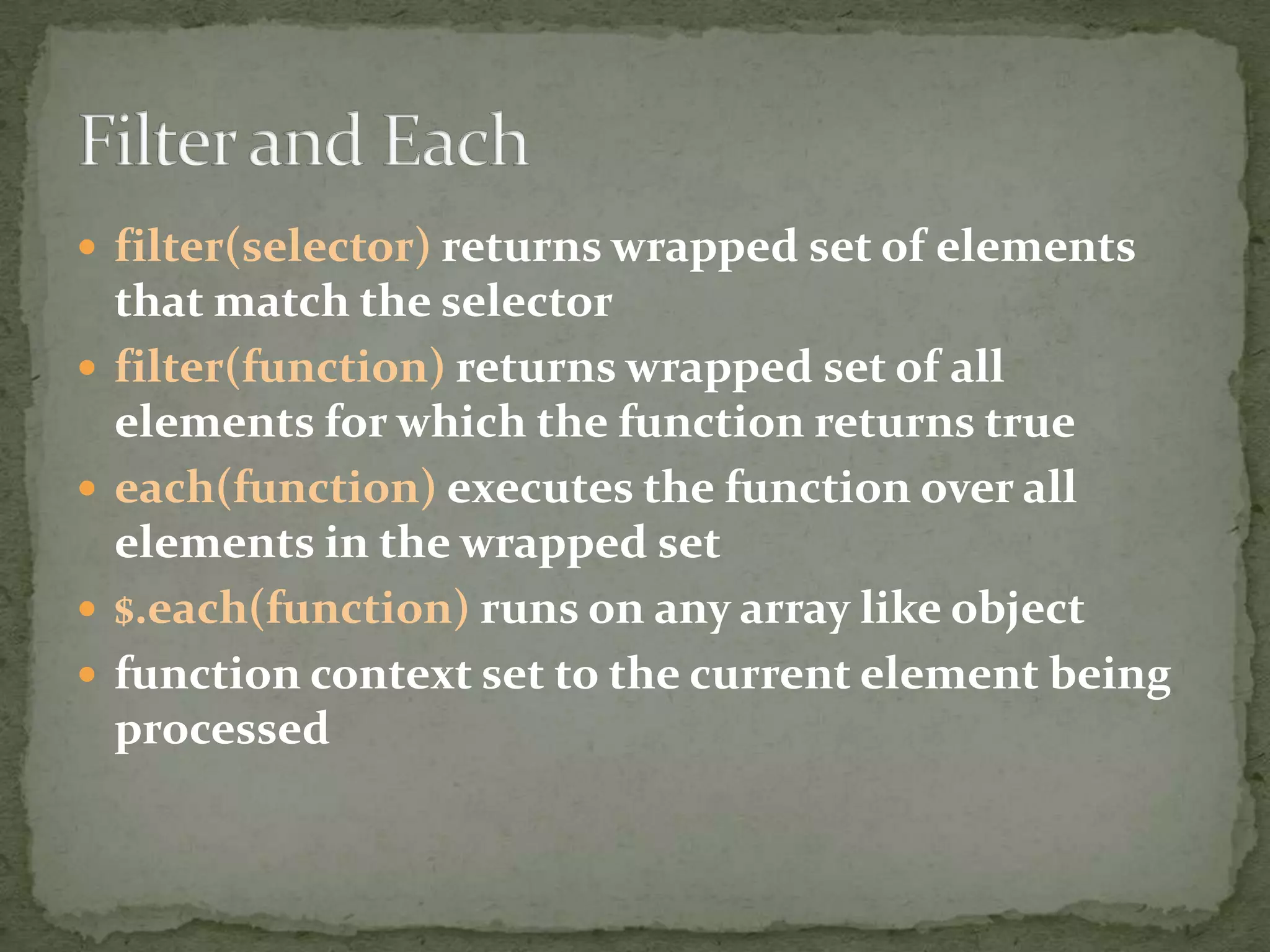


![$.merge() combines 2 arrays and saves result to first array$.extend() combines 2+ objects and saves result to first objectjQuery.extend([recursive?], target, object1, ... )Common idiom to use $.extend() to provide default valuesfunction(options) {var settings = $.extend({ prop1: 200, prop2: null, }, options || {} );}Merge And Extend](https://image.slidesharecdn.com/javascriptandjquery-12815608159556-phpapp01/75/Javascript-And-J-Query-33-2048.jpg)
